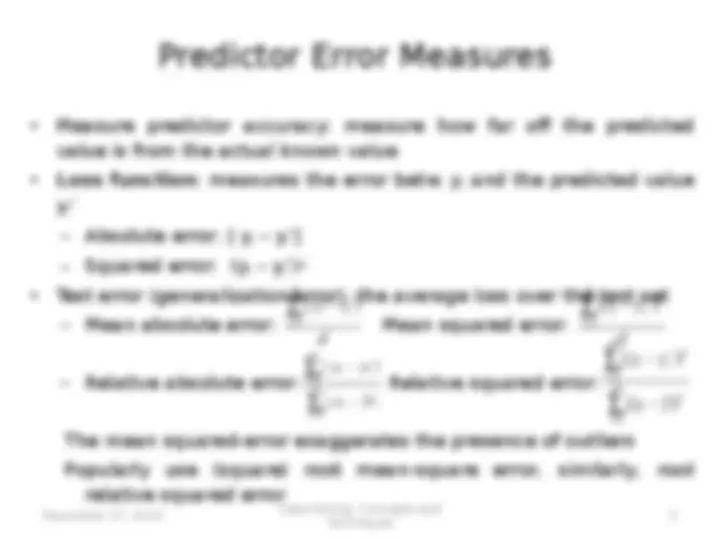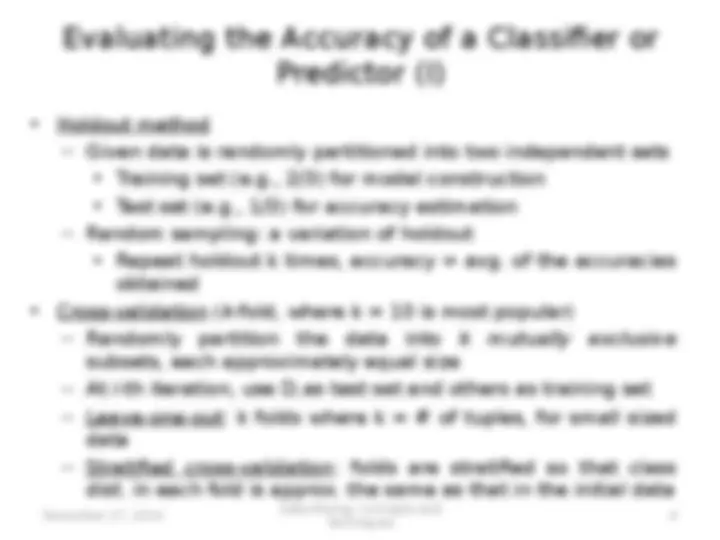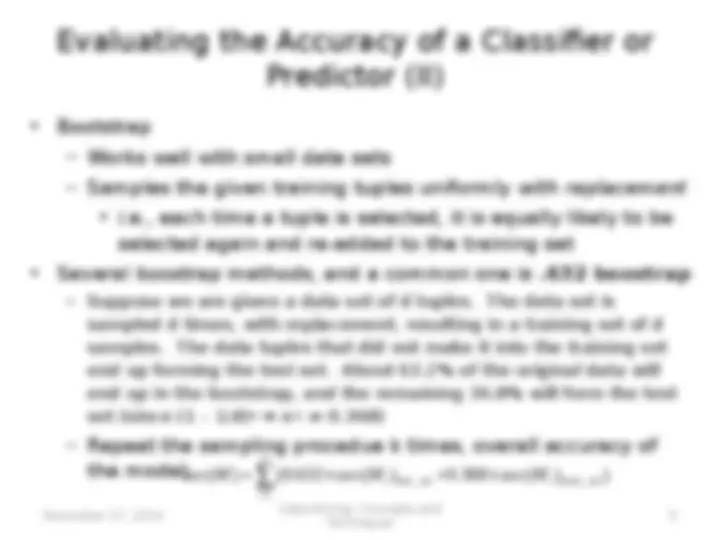





Study with the several resources on Docsity

Earn points by helping other students or get them with a premium plan


Prepare for your exams
Study with the several resources on Docsity

Earn points to download
Earn points by helping other students or get them with a premium plan
Community
Ask the community for help and clear up your study doubts
Discover the best universities in your country according to Docsity users
Free resources
Download our free guides on studying techniques, anxiety management strategies, and thesis advice from Docsity tutors
In this document topics covered which are Classification and Prediction, Classifier Accuracy Measures, Predictor Error Measures, Evaluating the Accuracy of a Classifier or Predictor (I), Model selection, Prediction.
Typology: Study notes
1 / 6

This page cannot be seen from the preview
Don't miss anything!




November 27, 2014 Data Mining: Concepts and 1
November 27, 2014 Data Mining: Concepts and 2
C 1 C 2 C 1 True positive False negative C 2 False positive True negative
November 27, 2014 Data Mining: Concepts and 4 Evaluating the Accuracy of a Classifier or Predictor (I)
November 27, 2014 Data Mining: Concepts and 5 Evaluating the Accuracy of a Classifier or Predictor (II)
_ 1 _ i train set k i acc M (^) acc Mi test set acc M